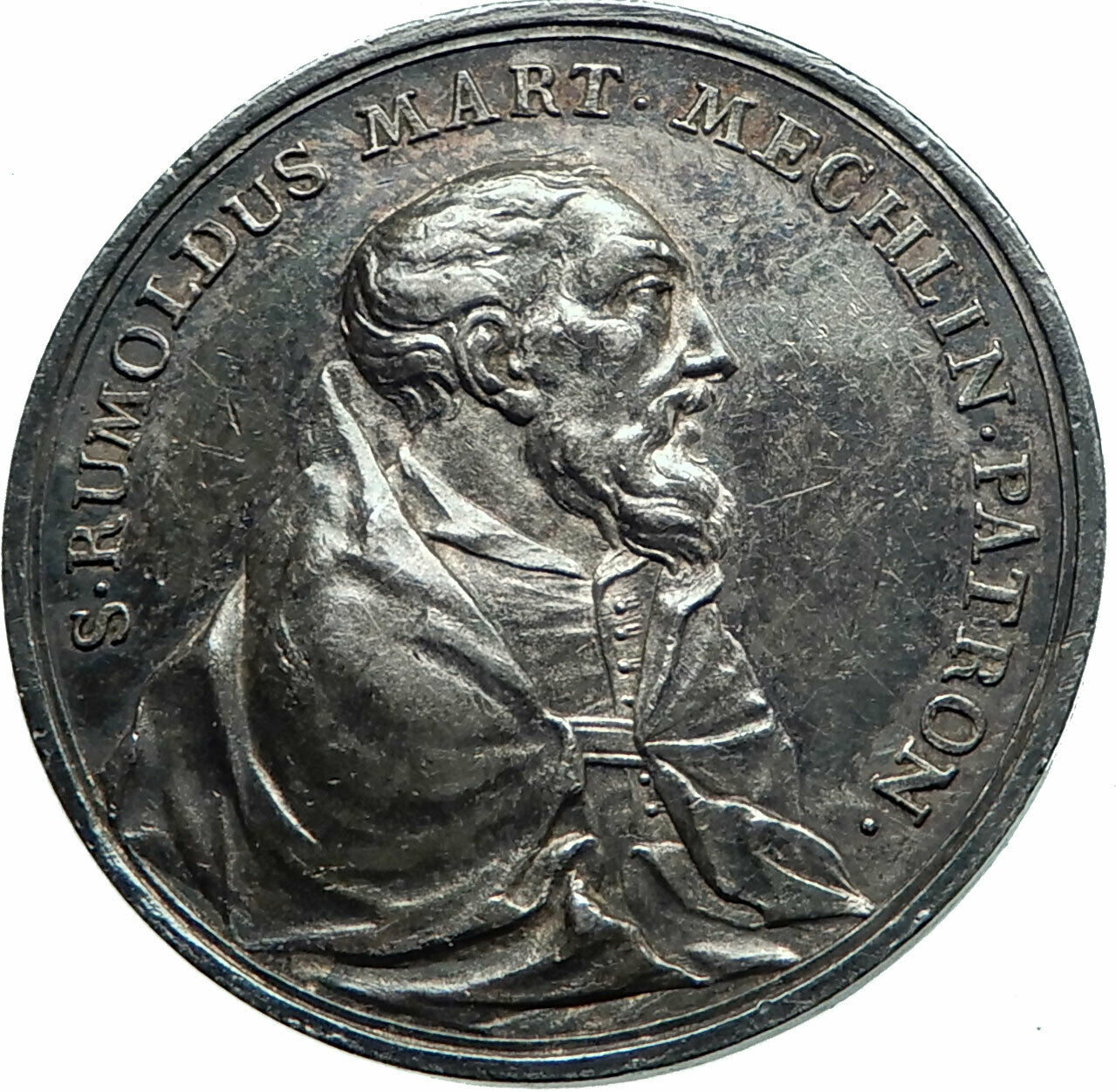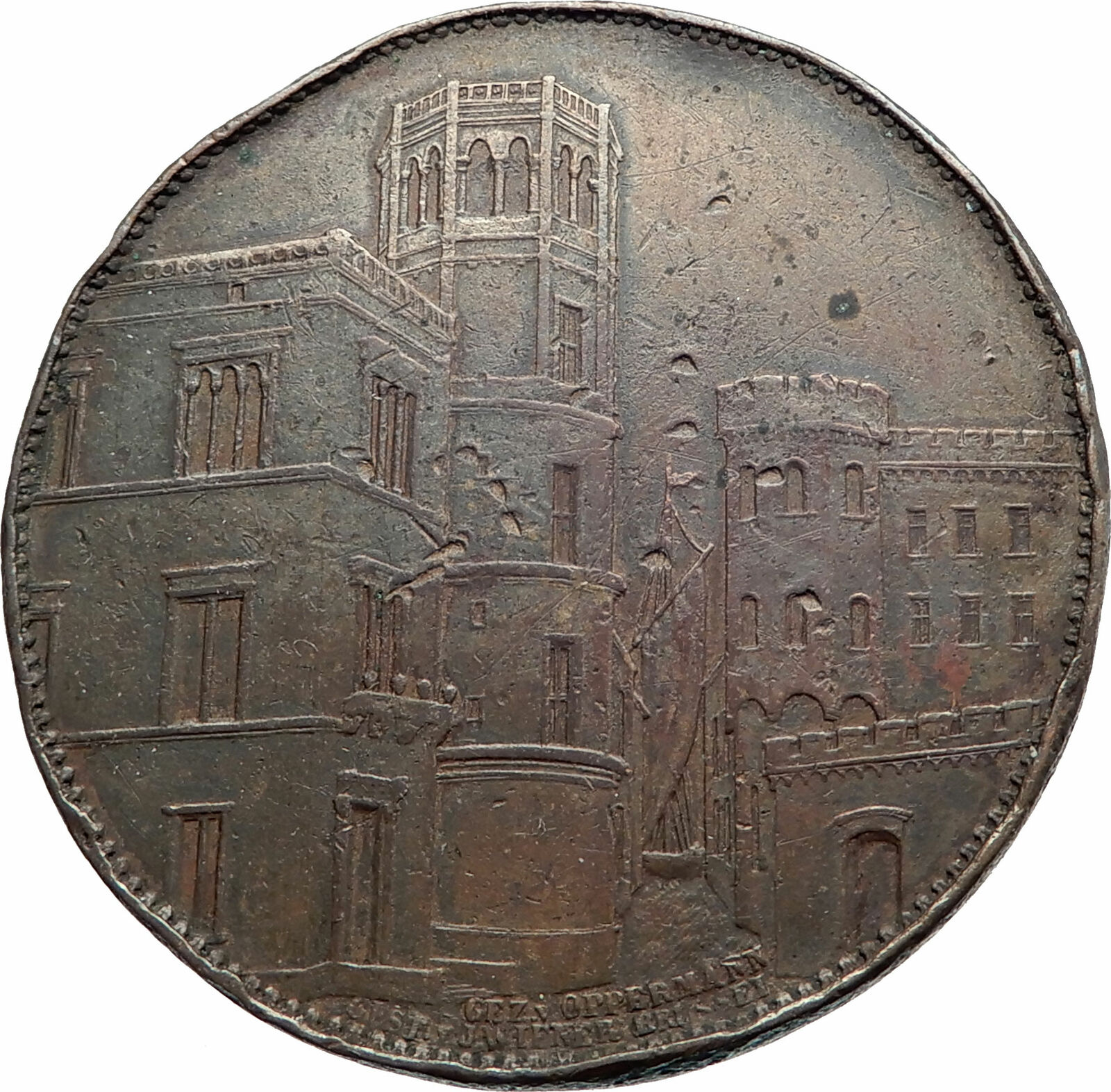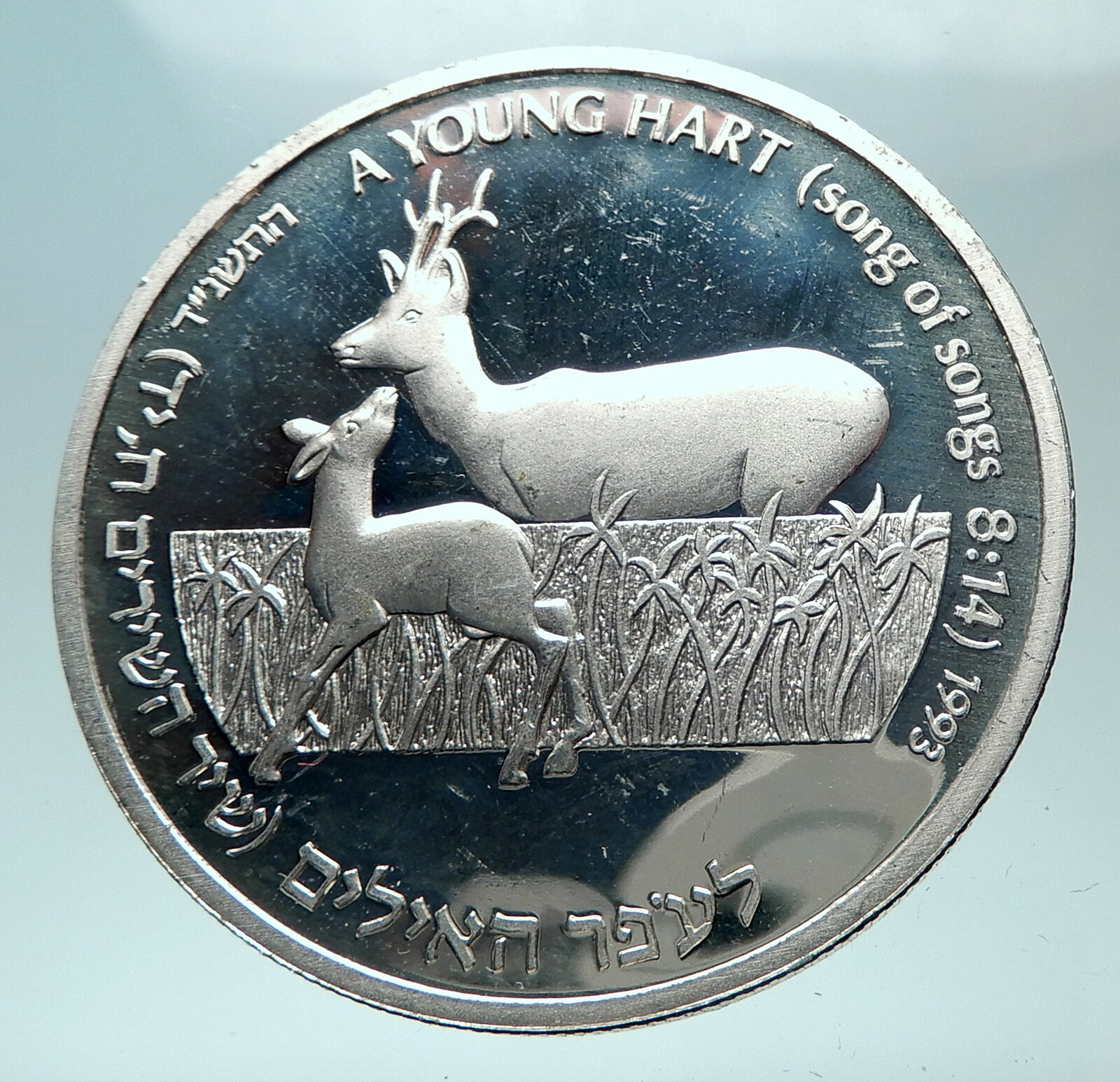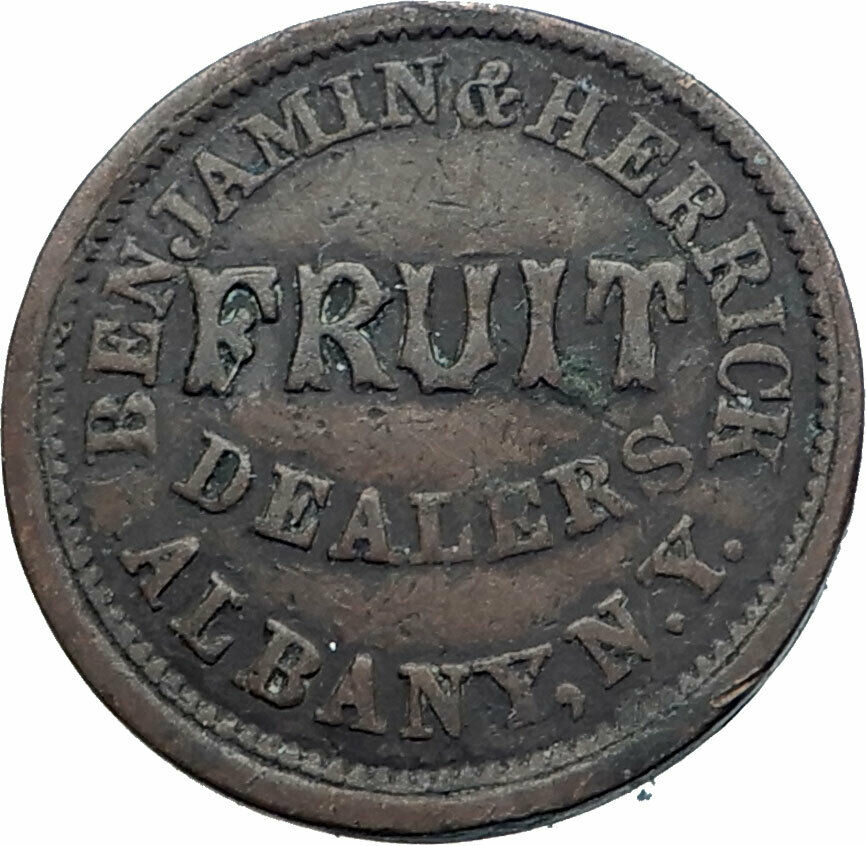|
Ukraine
Cossack Uprising in Kiev – Monument
1970’s Space Materials Metal Medal 60mm (36.93 grams)
Monument of Bohdan on Horseback in Kiev.
1888, Inscription within and around.
You are bidding on the exact item pictured, provided with a Certificate of Authenticity and Lifetime Guarantee of Authenticity.
 Zynoviy Bohdan Khmelnytsky (Ruthenian: Ѕѣнові Богдан Хмелнiцкiи; modern Ukrainian: Богдан Зиновій Михайлович Хмельницький; c. 1595 – 6 August 1657) was a UkrainianHetman of the Zaporozhian Host, then in the Polish Crown of the Polish–Lithuanian Commonwealth (now part of Ukraine). He led an uprising against the Commonwealth and its magnates (1648–1654) that resulted in the creation of a state led by the Cossacks. In 1654, he concluded the Treaty of Pereyaslav with the Moscow Tsar and thus allied the Cossack Hetmanate with Tsardom of Muscovy. Zynoviy Bohdan Khmelnytsky (Ruthenian: Ѕѣнові Богдан Хмелнiцкiи; modern Ukrainian: Богдан Зиновій Михайлович Хмельницький; c. 1595 – 6 August 1657) was a UkrainianHetman of the Zaporozhian Host, then in the Polish Crown of the Polish–Lithuanian Commonwealth (now part of Ukraine). He led an uprising against the Commonwealth and its magnates (1648–1654) that resulted in the creation of a state led by the Cossacks. In 1654, he concluded the Treaty of Pereyaslav with the Moscow Tsar and thus allied the Cossack Hetmanate with Tsardom of Muscovy.
While the Czapliński Affair is generally regarded as the immediate cause of the uprising, it was primarily a catalyst for actions representing rising popular discontent. Religion, ethnicity, and economics factored into this discontent. While the Polish–Lithuanian Commonwealth remained a union of nations, a sizable population of Orthodox Ruthenians were ignored. Oppressed by the Polish magnates, they took their wrath out on Poles, as well as the Jews, who often managed the estates of Polish nobles. The advent of the Counter-Reformation worsened relations between the Orthodox and Catholic Churches. Many Orthodox Ukrainians considered the Union of Brest as a threat to their Orthodox faith.
At the end of 1647 Khmelnytsky reached the estuary of the Dnieper river. On 7 December, his small detachment (300–500 men), with the help of registered Cossacks who went over to his side, disarmed the small Polish detachment guarding the area and took over the Zaporozhian Sich. The Poles attempted to retake the Sich but were decisively defeated as more registered Cossacks joined the forces. At the end of January 1648, a Cossack Rada was called and Khmelnytsky was unanimously elected a hetman. A period of feverish activity followed. Cossacks were sent with hetman’s letters to many regions of Ukraine calling on Cossacks and Orthodox peasants to join the rebellion, Khortytsia was fortified, efforts were made to acquire and make weapons and ammunition, and emissaries were sent to the Khan of Crimea, İslâm III Giray.
Initially, Polish authorities took the news of Khmelnytsky’s arrival at the Sich and reports about the rebellion lightly. The two sides exchanged lists of demands: the Poles asked the Cossacks to surrender the mutinous leader and disband, while Khmelnytsky and the Rada demanded that the Commonwealth restore the Cossacks’ ancient rights, stop the advance of the Ukrainian Greek Catholic Church, yield the right to appoint Orthodox leaders of the Sich and of the Registered Cossack regiments, and to remove Commonwealth troops from Ukraine. The Polish magnates considered the demands an affront, and an army headed by Stefan Potocki moved in the direction of the Sich.
Had the Cossacks stayed at Khortytsia, they might have been defeated, as in many other rebellions. However, Khmelnytsky marched against the Poles. The two armies met on 16 May 1648 at Zhovti Vody, where, aided by the Tatars of Tugay Bey, the Cossacks inflicted their first crushing defeat on the Commonwealth. It was repeated soon afterwards, with the same success, at the Battle of Korsuń on 26 May 1648. Khmelnytsky used his diplomatic and military skills: under his leadership, the Cossack army moved to battle positions following his plans, Cossacks were proactive and decisive in their manoeuvrers and attacks, and most importantly, he gained the support of both large contingents of registered Cossacks and the Crimean Khan, his crucial ally for the many battles to come.
The Patriarch of Jerusalem Paiseus, who was visiting Kyiv at this time, referred to Khmelnytsky as the Prince of Rus, the head of an independent Ukrainian state, according to contemporaries. In February 1649, during negotiations in Pereiaslav with a Polish delegation headed by Senator Adam Kysil, Khmelnytsky declared that he was “the sole autocrat of Rus” and that he had “enough power in Ukraine, Podilia, and Volhynia… in his land and principality stretching as far as Lviv, Chełm, and Halych.”
I already did more than was thinking before, now I will obtain what I revised recently. I will liberate out of the Polish woe all of the Ruthenian people! Before I was fighting for the insults and injustice caused to me, now I will fight for our Orthodox faith. And all people will help me in that all the way to Lublin and Krakow, and I won’t back off from the people as they are our right hand. And for the purpose lest you won’t attack cossacks by conquering peasants, I will have two, three hundred thousands of them.
— (Bohdan Khmelnytsky, the Prince of Ruthenia)
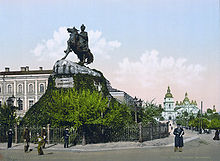 After the period of initial military successes, the state-building process began. His leadership was demonstrated in all areas of state-building: military, administration, finance, economics and culture. Khmelnytsky made the Zaporozhian Host the supreme power in the new Ukrainian state and unified all the spheres of Ukrainian society under his authority. Khmelnytsky built a new government system and developed military and civilian administration. After the period of initial military successes, the state-building process began. His leadership was demonstrated in all areas of state-building: military, administration, finance, economics and culture. Khmelnytsky made the Zaporozhian Host the supreme power in the new Ukrainian state and unified all the spheres of Ukrainian society under his authority. Khmelnytsky built a new government system and developed military and civilian administration.
A new generation of statesmen and military leaders came to the forefront: Ivan Vyhovsky, Pavlo Teteria, Danylo Nechai and Ivan Nechai, Ivan Bohun, Hryhoriy Hulyanytsky. From Cossack polkovnyks, officers, and military commanders, a new elite within the Cossack Hetman state was born. Throughout the years, the elite preserved and maintained the autonomy of the Cossack Hetmanate in the face of Russia’s attempt to curb it. It was also instrumental in the onset of the period of Ruin that followed, eventually destroying most of the achievements of the Khmelnytsky era.
 The Cossack uprisings (also rebellions, revolts) were a series of military conflicts between the cossacks and the states claiming dominion over the territories the Cossacks lived in, namely the Polish–Lithuanian Commonwealth and Russian Empire during the 16th, 17th, and 18th centuries. Both states tried to exert control over the independent-minded Cossacks. While the early uprisings were against the Commonwealth, as the Russian Empire gained increasing and then total control over the Ruthenian (Ukrainian) lands where the Cossacks lived, the target of Cossacks uprisings changed as well. The Cossack uprisings (also rebellions, revolts) were a series of military conflicts between the cossacks and the states claiming dominion over the territories the Cossacks lived in, namely the Polish–Lithuanian Commonwealth and Russian Empire during the 16th, 17th, and 18th centuries. Both states tried to exert control over the independent-minded Cossacks. While the early uprisings were against the Commonwealth, as the Russian Empire gained increasing and then total control over the Ruthenian (Ukrainian) lands where the Cossacks lived, the target of Cossacks uprisings changed as well.
The origins of the first Cossacks are disputed. Traditional historiography dates the emergence of Cossacks to the 14th to 15th centuries. Towards the end of the 15th century, the Ukrainian Cossacks formed the Zaporozhian Sich centered on the fortified Dnipro islands. Initially a vassal of Polish–Lithuanian Commonwealth, the increasing social and religious pressure from the Commonwealth caused a series of uprisings, and the proclamation of an independent Cossack Hetmanate, culminating in a rebellion under Bohdan Khmelnytsky in the mid-17th century. While the Cossacks were useful to the Polish-Lithuanian states in the war periods, they proved to be more problematic in the peacetime, due to their raids on the Commonwealth neighbours (primarily, the Ottoman Empire and its allies). Further, the Polish nobility tried to assert control over the Cossack territories, turn them into feudal latifundia, limit the growth of the militant Cossacks, and even reverse it, by turning the Cossacks into serfs. Afterward the Khmelnytsky Uprising, the Treaty of Pereyaslav brought most of the Cossack Hetmanate under Russian control.
The Zaporozhian Cossacks were not the only notable group of Cossacks; others included the Don Cossack Host, Dlobodsk Cossacks, Terek Cossacks and Yaik Cossacks. As the Tsardom of Muscovy took over the disputed Cossacks lands from the Poland–Lithuania, eventually all Cossacks came under the Russian rule, but the Tsarist and later Imperial government had only a limited control over the Cossacks. The Cossacks provided refugee for runaway serfs and bandits, and often mounted unauthorized raids and pirate expeditions against the Ottoman Empire. While the Cossack hosts in the Russian Empire served as buffer zones on its borders, the expansionist ambitions of the empire relied on ensuring control over the Cossacks, which caused tension with their traditional independent lifestyle. As the empire attempted to limit Cossacks autonomy in the 17th and 18th centuries this resulted in rebellions led by Stenka Razin, Kondraty Bulavin and Yemelyan Pugachev. In extreme cases, whole Hosts could be dissolved, as was the fate of the Zaporozhian Sich in 1775. In this last phase of their history, the Cossacks lost most of their autonomy to the Russian state.
Cossack uprisings, like the Cossack people themselves, have been portrayed variously in the Polish, Russian and Ukrainian historiographers.
 The Union of Soviet Socialist Republics (USSR, Russian: Союз Советских Социалистических Республик, tr. Soyuz Sovetskikh Sotsialisticheskikh Respublik, abbreviated СССР, SSSR), also known as the Soviet Union (Советский Союз), was a constitutionally socialist state that existed on the territory of most of the former Russian Empire in Eurasia between 1922 and 1991. The Union of Soviet Socialist Republics (USSR, Russian: Союз Советских Социалистических Республик, tr. Soyuz Sovetskikh Sotsialisticheskikh Respublik, abbreviated СССР, SSSR), also known as the Soviet Union (Советский Союз), was a constitutionally socialist state that existed on the territory of most of the former Russian Empire in Eurasia between 1922 and 1991.
The Soviet Union had a single-party political system dominated by the Communist Party. Nominally a union of Soviet republics, of which there were 15 after 1956, with the capital in Moscow, de facto the Soviet Union was a highly centralized state with a planned economy. The security agency KGB actively oversaw much of the Soviet society.
The union was founded in December 1922, when the Russian SFSR, which formed during the Russian Revolution of 1917 and emerged victorious in the ensuing Russian Civil War, unified with the Transcaucasian, Ukrainian and Belorussian SSRs. After the death of Vladimir Lenin, the first Soviet leader, power was eventually consolidated by Joseph Stalin, who led the country through a large-scale industrialization with command economy and political repression. During World War II, in June 1941, the Soviet Union was attacked by Germany, a country it had signed a non-aggression pact with. After four years of warfare, the Soviet Union emerged as one of the world’s two superpowers, extending its influence into much of Eastern Europe and beyond. The Cold War, a global ideological and political struggle between the Soviet Union and its satellites from the Eastern Bloc on the one side and the United States and its allies on the other side, which the Soviet bloc, hit by economic standstill, ultimately lost, marked the post-war period. In the late 1980s the last Soviet leader Mikhail Gorbachev tried to reform the state with his policies of perestroika and glasnost, but the Soviet Union ultimately collapsed and was formally dissolved in December 1991 after the abortive August coup attempt. Since then the Russian Federation is exercising its rights and fulfilling its obligations.
 Ukraine is a country in Eastern Europe. It is bordered by Russia to the east and north-east; Belarus to the north; Poland, Slovakia and Hungary to the west; and Romania, Moldova and the Black Sea to the south. Including Crimea, Ukraine has an area of 603,628 km2 (233,062 sq mi), and is the second-largest country in Europe after Russia. Excluding Crimea, Ukraine has a population of about 41.5 million, making it the eighth-most populous country in Europe. Its capital and largest city is Kyiv. Ukraine is a country in Eastern Europe. It is bordered by Russia to the east and north-east; Belarus to the north; Poland, Slovakia and Hungary to the west; and Romania, Moldova and the Black Sea to the south. Including Crimea, Ukraine has an area of 603,628 km2 (233,062 sq mi), and is the second-largest country in Europe after Russia. Excluding Crimea, Ukraine has a population of about 41.5 million, making it the eighth-most populous country in Europe. Its capital and largest city is Kyiv.
The territory of modern Ukraine has been inhabited since 32,000 BC. During the Middle Ages, the area was a key centre of East Slavic culture, with the powerful state of Kievan Rus’ forming the basis of Ukrainian identity. Following its fragmentation in the 13th century, the territory was contested, ruled and divided by a variety of powers, including the Polish–Lithuanian Commonwealth, Austria-Hungary, the Ottoman Empire and Russia. A Cossack republic emerged and prospered during the 17th and 18th centuries, but its territory was eventually split between Poland and the Russian Empire. In the aftermath of the Russian Revolution, a Ukrainian national movement for self-determination emerged, and the internationally recognized Ukrainian People’s Republic was declared on 23 June 1917. After World War II the western part of Ukraine merged into the Ukrainian Soviet Socialist Republic, and the whole country became a part of the Soviet Union. Ukraine gained its independence in 1991, following the dissolution of the Soviet Union.
 Following its independence, Ukraine declared itself a neutral state;it formed a limited military partnership with Russia and other CIS countries while also establishing a partnership with NATO in 1994. In 2013, after the government of President Viktor Yanukovych had decided to suspend the Ukraine–European Union Association Agreement and seek closer economic ties with Russia, a several-months-long wave of demonstrations and protests known as the Euromaidan began, which later escalated into the 2014 Ukrainian revolution that led to the overthrow of Yanukovych and the establishment of a new government. These events formed the background for the annexation of Crimea by Russia in March 2014, and the War in Donbass in April 2014. On 1 January 2016, Ukraine applied the economic component of the Deep and Comprehensive Free Trade Area with the European Union. Following its independence, Ukraine declared itself a neutral state;it formed a limited military partnership with Russia and other CIS countries while also establishing a partnership with NATO in 1994. In 2013, after the government of President Viktor Yanukovych had decided to suspend the Ukraine–European Union Association Agreement and seek closer economic ties with Russia, a several-months-long wave of demonstrations and protests known as the Euromaidan began, which later escalated into the 2014 Ukrainian revolution that led to the overthrow of Yanukovych and the establishment of a new government. These events formed the background for the annexation of Crimea by Russia in March 2014, and the War in Donbass in April 2014. On 1 January 2016, Ukraine applied the economic component of the Deep and Comprehensive Free Trade Area with the European Union.
Ukraine is a developing country ranking 74th in the Human Development Index. It is the poorest country in Europe alongside Moldova, and suffers from a very high poverty rate as well as severe corruption. However, because of its extensive fertile farmlands, Ukraine is one of the world’s largest grain exporters. It also maintains the third-largest military in Europe after Russia and France. Ukraine is a unitary republic under a semi-presidential system with separate powers: legislative, executive and judicial branches. The country is a member of the United Nations, the Council of Europe, the Organization for Security and Co-operation in Europe (OSCE), the GUAM organization, and one of the founding states of the Commonwealth of Independent States (CIS).
 The Russian Civil War devastated the whole Russian Empire including Ukraine. It left over 1.5 million people dead and hundreds of thousands homeless in the former Russian Empire territory. Soviet Ukraine also faced the Russian famine of 1921 (primarily affecting the Russian Volga-Ural region). During the 1920s, under the Ukrainisation policy pursued by the national Communist leadership of Mykola Skrypnyk, Soviet leadership encouraged a national renaissance in the Ukrainian culture and language. Ukrainisation was part of the Soviet-wide policy of Korenisation (literally indigenisation). The Bolsheviks were also committed to universal health care, education and social-security benefits, as well as the right to work and housing. Women’s rights were greatly increased through new laws. Most of these policies were sharply reversed by the early 1930s after Joseph Stalin became the de facto communist party leader. The Russian Civil War devastated the whole Russian Empire including Ukraine. It left over 1.5 million people dead and hundreds of thousands homeless in the former Russian Empire territory. Soviet Ukraine also faced the Russian famine of 1921 (primarily affecting the Russian Volga-Ural region). During the 1920s, under the Ukrainisation policy pursued by the national Communist leadership of Mykola Skrypnyk, Soviet leadership encouraged a national renaissance in the Ukrainian culture and language. Ukrainisation was part of the Soviet-wide policy of Korenisation (literally indigenisation). The Bolsheviks were also committed to universal health care, education and social-security benefits, as well as the right to work and housing. Women’s rights were greatly increased through new laws. Most of these policies were sharply reversed by the early 1930s after Joseph Stalin became the de facto communist party leader.
Starting from the late 1920s with a centrally planned economy, Ukraine was involved in Soviet industrialisation and the republic’s industrial output quadrupled during the 1930s. The peasantry suffered from the programme of collectivisation of agriculture which began during and was part of the first five-year plan and was enforced by regular troops and secret police. Those who resisted were arrested and deported and agricultural productivity greatly declined. As members of the collective farms were sometimes not allowed to receive any grain until unrealistic quotas were met, millions starved to death in a famine known as the Holodomor or the “Great Famine”.
Scholars are divided as to whether this famine fits the definition of genocide, but the Ukrainian parliament and the governments of other countries have acknowledged it as such.
The Communist leadership perceived famine as a means of class struggle and used starvation as a punishment tool to force peasants into collective farms.
Largely the same groups were responsible for the mass killing operations during the civil war, collectivisation, and the Great Terror. These groups were associated with Yefim Yevdokimov (1891–1939) and operated in the Secret Operational Division within General State Political Administration (OGPU) in 1929–31. Yevdokimov transferred into Communist Party administration in 1934, when he became Party secretary for North Caucasus Krai. He appears to have continued advising Joseph Stalin and Nikolai Yezhov on security matters, and the latter relied on Yevdokimov’s former colleagues to carry out the mass killing operations that are known as the Great Terror in 1937–38.
On 13 January 2010, Kyiv Appellate Court posthumously found Stalin, Kaganovich and other Soviet Communist Party functionaries guilty of genocide against Ukrainians during the Holodomor famine.
The republic was heavily damaged by the war, and it required significant efforts to recover. More than 700 cities and towns and 28,000 villages were destroyed. The situation was worsened by a famine in 1946–47, which was caused by a drought and the wartime destruction of infrastructure. The death toll of this famine varies, with even the lowest estimate in the tens of thousands. In 1945, the Ukrainian SSR became one of the founding members of the United Nations organization, part of a special agreement at the Yalta Conference.
Post-war ethnic cleansing occurred in the newly expanded Soviet Union. As of 1 January 1953, Ukrainians were second only to Russians among adult “special deportees”, comprising 20% of the total. In addition, over 450,000 ethnic Germans from Ukraine and more than 200,000 Crimean Tatars were victims of forced deportations.
Following the death of Stalin in 1953, Nikita Khrushchev became the new leader of the USSR. Having served as First Secretary of the Communist Party of Ukrainian SSR in 1938–49, Khrushchev was intimately familiar with the republic; after taking power union-wide, he began to emphasize “the friendship” between the Ukrainian and Russian nations. In 1954, the 300th anniversary of the Treaty of Pereyaslav was widely celebrated. Crimea was transferred from the Russian SFSR to the Ukrainian SSR.
By 1950, the republic had fully surpassed pre-war levels of industry and production. During the 1946–1950 five-year plan, nearly 20% of the Soviet budget was invested in Soviet Ukraine, a 5% increase from pre-war plans. As a result, the Ukrainian workforce rose 33.2% from 1940 to 1955 while industrial output grew 2.2 times in that same period.
|




 Zynoviy Bohdan Khmelnytsky (Ruthenian: Ѕѣнові Богдан Хмелнiцкiи; modern Ukrainian: Богдан Зиновій Михайлович Хмельницький; c. 1595 – 6 August 1657) was a UkrainianHetman of the Zaporozhian Host, then in the Polish Crown of the Polish–Lithuanian Commonwealth (now part of Ukraine). He led an uprising against the Commonwealth and its magnates (1648–1654) that resulted in the creation of a state led by the Cossacks. In 1654, he concluded the Treaty of Pereyaslav with the Moscow Tsar and thus allied the Cossack Hetmanate with Tsardom of Muscovy.
Zynoviy Bohdan Khmelnytsky (Ruthenian: Ѕѣнові Богдан Хмелнiцкiи; modern Ukrainian: Богдан Зиновій Михайлович Хмельницький; c. 1595 – 6 August 1657) was a UkrainianHetman of the Zaporozhian Host, then in the Polish Crown of the Polish–Lithuanian Commonwealth (now part of Ukraine). He led an uprising against the Commonwealth and its magnates (1648–1654) that resulted in the creation of a state led by the Cossacks. In 1654, he concluded the Treaty of Pereyaslav with the Moscow Tsar and thus allied the Cossack Hetmanate with Tsardom of Muscovy.  After the period of initial military successes, the state-building process began. His leadership was demonstrated in all areas of state-building: military, administration, finance, economics and culture. Khmelnytsky made the Zaporozhian Host the supreme power in the new Ukrainian state and unified all the spheres of Ukrainian society under his authority. Khmelnytsky built a new government system and developed military and civilian administration.
After the period of initial military successes, the state-building process began. His leadership was demonstrated in all areas of state-building: military, administration, finance, economics and culture. Khmelnytsky made the Zaporozhian Host the supreme power in the new Ukrainian state and unified all the spheres of Ukrainian society under his authority. Khmelnytsky built a new government system and developed military and civilian administration. The Cossack uprisings (also rebellions, revolts) were a series of military conflicts between the cossacks and the states claiming dominion over the territories the Cossacks lived in, namely the Polish–Lithuanian Commonwealth and Russian Empire during the 16th, 17th, and 18th centuries. Both states tried to exert control over the independent-minded Cossacks. While the early uprisings were against the Commonwealth, as the Russian Empire gained increasing and then total control over the Ruthenian (Ukrainian) lands where the Cossacks lived, the target of Cossacks uprisings changed as well.
The Cossack uprisings (also rebellions, revolts) were a series of military conflicts between the cossacks and the states claiming dominion over the territories the Cossacks lived in, namely the Polish–Lithuanian Commonwealth and Russian Empire during the 16th, 17th, and 18th centuries. Both states tried to exert control over the independent-minded Cossacks. While the early uprisings were against the Commonwealth, as the Russian Empire gained increasing and then total control over the Ruthenian (Ukrainian) lands where the Cossacks lived, the target of Cossacks uprisings changed as well. The Union of Soviet Socialist Republics (USSR, Russian: Союз Советских Социалистических Республик, tr. Soyuz Sovetskikh Sotsialisticheskikh Respublik, abbreviated СССР, SSSR), also known as the Soviet Union (Советский Союз), was a constitutionally socialist state that existed on the territory of most of the former Russian Empire in Eurasia between 1922 and 1991.
The Union of Soviet Socialist Republics (USSR, Russian: Союз Советских Социалистических Республик, tr. Soyuz Sovetskikh Sotsialisticheskikh Respublik, abbreviated СССР, SSSR), also known as the Soviet Union (Советский Союз), was a constitutionally socialist state that existed on the territory of most of the former Russian Empire in Eurasia between 1922 and 1991. Ukraine is a country in Eastern Europe. It is bordered by Russia to the east and north-east; Belarus to the north; Poland, Slovakia and Hungary to the west; and Romania, Moldova and the Black Sea to the south. Including Crimea, Ukraine has an area of 603,628 km2 (233,062 sq mi), and is the second-largest country in Europe after Russia. Excluding Crimea, Ukraine has a population of about 41.5 million, making it the eighth-most populous country in Europe. Its capital and largest city is Kyiv.
Ukraine is a country in Eastern Europe. It is bordered by Russia to the east and north-east; Belarus to the north; Poland, Slovakia and Hungary to the west; and Romania, Moldova and the Black Sea to the south. Including Crimea, Ukraine has an area of 603,628 km2 (233,062 sq mi), and is the second-largest country in Europe after Russia. Excluding Crimea, Ukraine has a population of about 41.5 million, making it the eighth-most populous country in Europe. Its capital and largest city is Kyiv. Following its independence, Ukraine declared itself a neutral state;it formed a limited military partnership with Russia and other CIS countries while also establishing a partnership with NATO in 1994. In 2013, after the government of President Viktor Yanukovych had decided to suspend the Ukraine–European Union Association Agreement and seek closer economic ties with Russia, a several-months-long wave of demonstrations and protests known as the Euromaidan began, which later escalated into the 2014 Ukrainian revolution that led to the overthrow of Yanukovych and the establishment of a new government. These events formed the background for the annexation of Crimea by Russia in March 2014, and the War in Donbass in April 2014. On 1 January 2016, Ukraine applied the economic component of the Deep and Comprehensive Free Trade Area with the European Union.
Following its independence, Ukraine declared itself a neutral state;it formed a limited military partnership with Russia and other CIS countries while also establishing a partnership with NATO in 1994. In 2013, after the government of President Viktor Yanukovych had decided to suspend the Ukraine–European Union Association Agreement and seek closer economic ties with Russia, a several-months-long wave of demonstrations and protests known as the Euromaidan began, which later escalated into the 2014 Ukrainian revolution that led to the overthrow of Yanukovych and the establishment of a new government. These events formed the background for the annexation of Crimea by Russia in March 2014, and the War in Donbass in April 2014. On 1 January 2016, Ukraine applied the economic component of the Deep and Comprehensive Free Trade Area with the European Union. The Russian Civil War devastated the whole Russian Empire including Ukraine. It left over 1.5 million people dead and hundreds of thousands homeless in the former Russian Empire territory. Soviet Ukraine also faced the Russian famine of 1921 (primarily affecting the Russian Volga-Ural region). During the 1920s, under the Ukrainisation policy pursued by the national Communist leadership of Mykola Skrypnyk, Soviet leadership encouraged a national renaissance in the Ukrainian culture and language. Ukrainisation was part of the Soviet-wide policy of Korenisation (literally indigenisation). The Bolsheviks were also committed to universal health care, education and social-security benefits, as well as the right to work and housing. Women’s rights were greatly increased through new laws. Most of these policies were sharply reversed by the early 1930s after Joseph Stalin became the de facto communist party leader.
The Russian Civil War devastated the whole Russian Empire including Ukraine. It left over 1.5 million people dead and hundreds of thousands homeless in the former Russian Empire territory. Soviet Ukraine also faced the Russian famine of 1921 (primarily affecting the Russian Volga-Ural region). During the 1920s, under the Ukrainisation policy pursued by the national Communist leadership of Mykola Skrypnyk, Soviet leadership encouraged a national renaissance in the Ukrainian culture and language. Ukrainisation was part of the Soviet-wide policy of Korenisation (literally indigenisation). The Bolsheviks were also committed to universal health care, education and social-security benefits, as well as the right to work and housing. Women’s rights were greatly increased through new laws. Most of these policies were sharply reversed by the early 1930s after Joseph Stalin became the de facto communist party leader.

